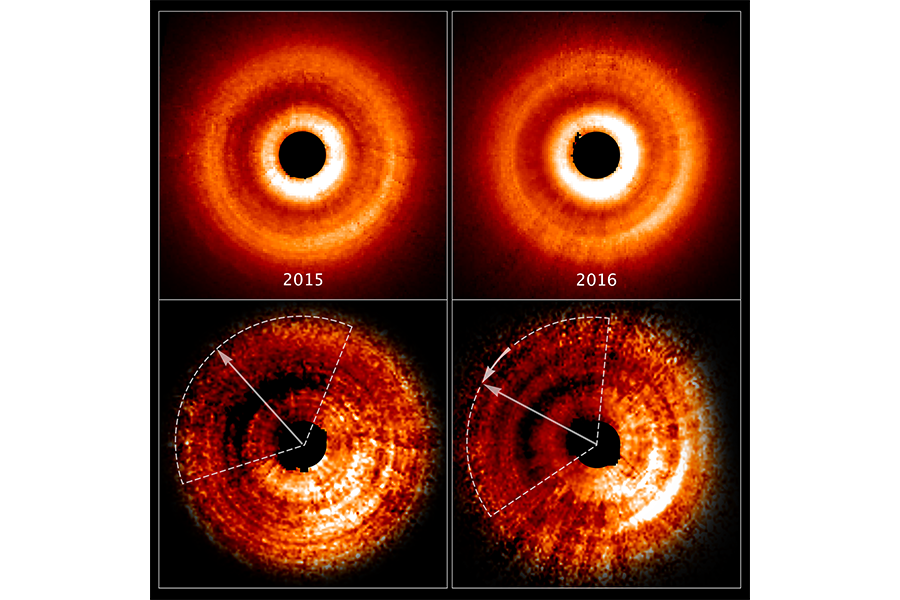Out of the shadows, a secret planet uncovered
Loading...
Sometimes shadows can mean much more than just the absence of light.
One particular shadow observed by the Hubble Space telescope, may actually be indirect evidence of a Jupiter-sized planet orbiting inside the dust disk revolving around a young star, according to a team of astronomers led by John Debes of at NASA's Space Telescope Science Institute (STScI) in Baltimore, Md. Too close to detect with standard techniques, the shy planet revealed itself in shadows cast on the outer parts of the disk, a method which may prove useful for discovering further planets in other systems.
Dim planets are notoriously hard to see next to bright parent stars, so astronomers have a bag of tricks such as looking for stars that appear to wobble or dim as planets orbit around them. But the newfound planet, located in the in the TW Hydrae stellar system some 192 light-years from Earth in the constellation Hydra, was different.
TW Hydra is ringed by a disk made of dust and gas, known as a protoplanetary disk. Such structures often circle young stars, eventually clumping together to form planets under the influence of gravity. The problem is, even Hubble’s mighty eye can’t see what’s going on inside.
Fortunately, Dr. Debes’s team had another trick up their sleeves. Under observation for well over a decade, astronomers first noticed the shadow, or "brightness asymmetry" in 2005, according to a Hubble press release. But to interpret the feature, they needed more data.
The breakthrough came when Debes and his team dug through the archives and put together all of Hubble’s data to make a surprising find: Over 16 years, the shadow had made one complete revolution around the star.
The speed was the smoking gun. Gravity dictates that protoplanetary disks turn at a crawl. If the dark spot had been a feature of the outer disk itself, Hubble would have needed centuries of data to observe a complete period, according to a NASA press release.
Moving that fast, it had to be something else. "The fact that I saw the same motion over 10 billion miles from the star was pretty significant, and told me that I was seeing something that was imprinted on the outer disk rather than something that was happening directly in the disk itself," Debes said in the release. "The best explanation is that the feature is a shadow moving across the surface of the disk."
But the colossal shadow was too big to be cast by even a Jupiter-sized planet. Where was it coming from? "The most plausible scenario is the gravitational influence of an unseen planet, which is pulling material out of the plane of the disk and twisting the inner disk," Debes explained. "The misaligned disk is inside the planet's orbit."
In other words, the planet orbits tipped at an odd angle from the rest of the disk, much like how Pluto is out of plane with our solar system. As the planet moves, its mass gravitationally drags the dust and gas up and out of the disk. It’s this displaced matter that blocks the star’s light, casting a rotating shadow on the outer regions of the planetary nursery.
Debes’s discovery may have applications beyond TW Hydrae as well. "Further monitoring of this and other shadows on protoplanetary disks potentially opens a new avenue for indirectly observing the sites of planet formation," the team stated in their paper.
And we might not have long to wait. The paper mentions a number of other stars where similar features have been detected, but unconfirmed due to a "dearth of coverage," among other reasons. Debes is optimistic that more data and continued observation may be the answer.
"This is the very first disk where we have so many images over such a long period of time, therefore allowing us to see this interesting effect," Debes said. "That gives us hope that this shadow phenomenon may be fairly common in young stellar systems."
[Editor's note: This article has been corrected to reflect which planet has tipped out of plane with our solar system. It is Pluto.]









